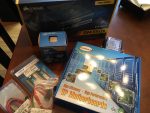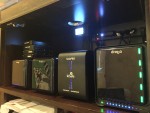I’ve dabbled with FreeNAS in the past and had such a great experience with pfSense (a similar FreeBSD-based project) that I jumped in with both feet on my home office server build. But my initial impressions were, frankly, terrible. I’ve got the system running and stable now, but I’m finding it difficult to recommend FreeNAS at this point.
FreeNAS
Migrating Data With ZFS Send and Receive
I like ZFS Send and Receive, but I’m not totally sold on it. I’ve used rsync for decades, so I’m not giving it up anytime soon. Even so, I can see the value of ZFS Send and Receive for local migration and data management tasks as well as the backup and replication tasks that are typically talked about.
My FreeNAS Build: Supermicro X10SL7, Intel Haswell Xeon, ECC RAM
Today I’m going to dive into the hardware I selected for FreeNAS, starting with the motherboard, CPU, and memory. FreeNAS runs on any PC hardware, but building a reliable and scalable storage solution means picking higher-end components. I selected a Supermicro X10SL7 server-class motherboard with 14 (!) SAS/SATA ports paired with an Intel Xeon E3-1231v3 (Haswell) CPU and ECC memory from Crucial.
Hello FreeNAS! Goodbye Drobo and Iomega…
Long-time readers of my blog know of my love for Drobo, but the time has come to say goodbye. My old Drobos (and Iomega ix-4) are showing their age and I decided to go in a different direction: I’m building a FreeNAS server. In this article I’ll talk about my thinking behind this move; later posts will talk in more detail about the hardware and software setup.
The Dumb Disk Fallacy
I am spending a few weeks examining the truths and fictions that bind our industry together. Let’s start with one of my favorite old canards: That enterprise storage must be overpriced because bare disk drives are so cheap. I have seen this straw man argument set up by so many throughout my career that it […]



